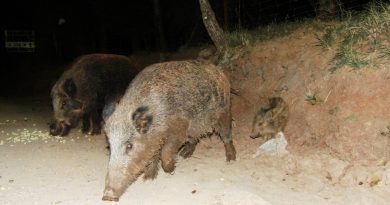Molecular detection of Anaplasma phagocytophilum in roe deer (Capreolus capreolus) in eastern Poland
Annals of agricultural and environmental medicine
ABSTRACTWild ungulates may serve as reservoirs for particular tick-borne pathogens (TBP) of importance for public and animal health. The aim of the study was to investigate, for the first time, the occurrence of Anaplasma phagocytophilum (AP) in a large population of roe deer in eastern Poland. Spleen samples from 424 roe deer (Capreolus capreolus) were collected during the 2018–2019 hunting season. Genetic screening for AP was carried out by PCR amplification of a fragment of the 16S rRNA and groEL genes. Twenty-six of the 424 spleen samples (6.13%) tested positive both for 16S rRNA and groEL. Phylogenetic analysis confirmed the existence of a specific roe deer ecotype of AP in eastern Poland. Despite the low prevalence of AP in roe deer populations in the study area, these animals may act as anaplasmosis reservoirs for ticks. Based on the zoonotic potential of granulocytic anaplasmosis, it seems advisable to introduce continuous monitoring of this infection among domestic, farm and wild animals.




